Note Retention

What are the benefits of using a digital tool for note-taking ?
The article discusses the advantages of using digital tools for note-taking, which include increased efficiency, improved learning and retention, environmental benefits, and collaboration opportunities. Digital notes can be taken quickly, organized easily, searched efficiently, and accessed from anywhere. They also offer visual aids, audio recordings, linking capabilities, and review options that enhance learning and retention. Additionally, digital note-taking reduces paper waste, energy consumption, and physical storage needs, contributing to a more sustainable environment. Finally, digital tools facilitate collaboration by allowing note sharing, real-time editing, version control, and feedback mechanisms. Overall, digital note-taking is an optimal choice for students, professionals, and anyone looking to optimize their note-taking experience.

What are some creative ways to make studying from notes more engaging ?
The article discusses various strategies to make note-based learning more engaging and effective. The suggested approaches include interactive notebooks, active review techniques, digital integration, engaging activities, and regular revision schedules. Interactive notebooks involve color coding, diagrams, and margin notes for visual appeal and memory retention. Active review techniques such as teach it back, flashcards, and summarization help in understanding and recalling concepts better. Digital integration tools like note-taking apps, Quizlet, and online collaboration platforms aid in organizing and sharing notes. Engaging activities like role-playing, debates, and gamification elements promote kinesthetic learning and discussions. Regular revision schedules with spaced repetition, review tracking, and reflection time ensure long-term memory retention. By incorporating these strategies, studying from notes becomes a dynamic and engaging process that enhances both understanding and retention of the material.

How can mind maps be used to enhance note-taking and organization ?
Mind maps are an effective tool for organizing information, enhancing memory recall, and improving note-taking. They offer a visual representation of complex ideas, making it easier to understand and remember them. Mind maps can be used in various ways, such as organizing information, enhancing memory recall, and improving note-taking. They utilize visual associations, hierarchical structures, and flexibility to aid in understanding, remembering, and applying complex information in different contexts. Examples of using mind maps include studying, project planning, brainstorming, and taking meeting notes.

How can I improve my memory retention while studying ?
Improving memory retention is vital for academic success. Here are some tips to help: create a conducive study environment, use active learning techniques, break information into chunks, practice retrieval, incorporate visual aids, stay physically and mentally healthy, and take breaks and manage your time effectively. Consistency and perseverance are key to achieving lasting improvements in memory retention.
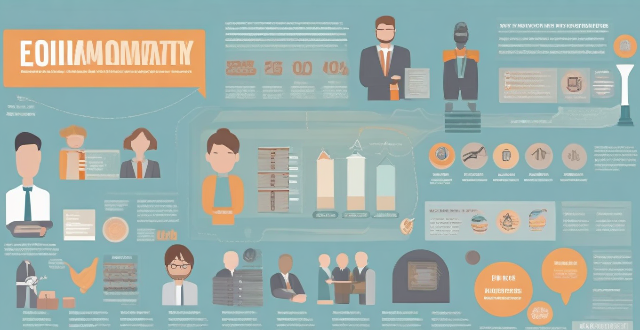
How does private equity impact job creation and retention ?
Private equity (PE) has a significant impact on job creation and retention, primarily through investing in underperforming companies, supporting startups and small businesses, and engaging in strategic acquisitions and mergers. PE firms also contribute to job retention by providing stable funding, investing in employee training programs, and participating in succession planning. While some argue that PE prioritizes short-term profits over long-term job growth, others contend that PE plays a crucial role in promoting economic stability and workforce development.

What are some ways to improve memory retention when studying ?
Improving memory retention is crucial for effective studying. Here are some ways to enhance your memory retention: 1. Create a conducive study environment by minimizing distractions, choosing comfortable seating, and ensuring adequate lighting. 2. Utilize active learning techniques such as engaging in active reading, teaching the material to others, and using visual aids. 3. Practice spaced repetition by distributing study sessions over time, reviewing regularly, and using flashcards. 4. Incorporate mnemonic devices like acronyms and acrostics, visual imagery, rhymes, and songs to make information more memorable. 5. Stay physically and mentally healthy by getting enough sleep, exercising regularly, and eating a balanced diet.

How does corporate social responsibility impact employee satisfaction and retention ?
Corporate Social Responsibility (CSR) is a business model that focuses on balancing profitability with social responsibility. It involves companies taking actions to improve societal well-being, environmental sustainability, and ethical practices. This approach not only benefits the community and the environment but also has a significant impact on employee satisfaction and retention. The relationship between CSR and employee satisfaction includes enhanced company image and reputation, alignment with personal values, and improved work environment. The relationship between CSR and employee retention includes lower turnover rates, increased loyalty, and higher engagement levels. In conclusion, corporate social responsibility plays a crucial role in enhancing employee satisfaction and retention. By prioritizing CSR initiatives, companies can create a positive work environment, attract and retain talent, and foster loyalty among their employees. As a result, businesses that embrace CSR are more likely to have a stable workforce and achieve long-term success.

How do sleep patterns influence memory retention from a scientific perspective ?
The text discusses the influence of sleep patterns on memory retention, emphasizing the crucial role of sleep in converting short-term memories to long-term ones. It explains the significance of REM and non-REM stages of sleep in consolidating different types of memories. The text also highlights the negative impacts of sleep deprivation on memory retention and suggests benefits of good sleep hygiene for enhancing memory consolidation.

How do I organize my notes for better understanding and retention ?
This comprehensive guide outlines effective strategies for organizing notes to improve understanding and retention. It emphasizes the importance of a consistent format, color-coding, personalizing notes, incorporating visual aids, regular review and revision, integrating real-world examples, maintaining cleanliness and organization, and leveraging technology. By adopting these practices, individuals can enhance their learning experience and retain information more effectively.
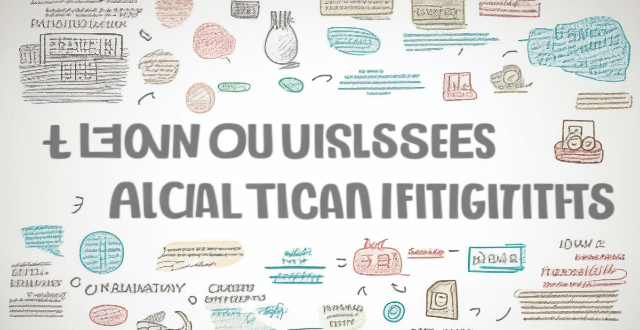
How do ESG considerations influence talent acquisition and retention ?
The text discusses how Environmental, Social, and Governance (ESG) considerations influence talent acquisition and retention. It states that companies are recognizing the value of incorporating ESG factors into their strategies to attract and retain top talent. The key points include attracting talent through ESG initiatives, retaining talent by aligning with personal values, benefits such as improved reputation and cost savings, challenges in balancing ESG with other priorities, and best practices for implementation. The conclusion emphasizes the importance of prioritizing ESG considerations while ensuring transparency and accountability in all aspects of ESG reporting.

What are the best iPhone apps for productivity ?
Productivity is a key aspect of modern life, and having the right tools can make all the difference. For those who use iPhones, there are numerous apps available that can help boost productivity. Some of the best ones include Evernote, Todoist, Trello, Microsoft Outlook, Notion, Google Drive, Apple Reminders, Slack, Asana, and Bear. These apps cover a wide range of needs, from task management to project collaboration to note-taking. By using these apps effectively, you can boost your productivity and achieve more in less time.
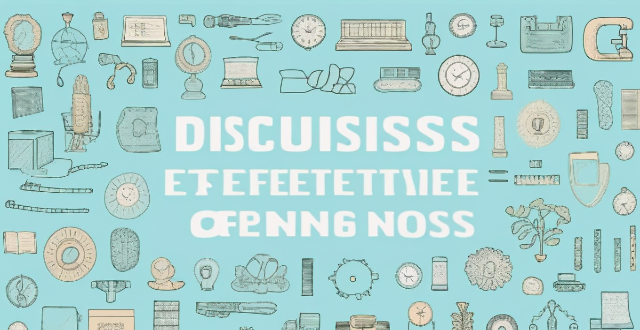
What are the most effective note-taking methods for students ?
The text discusses five effective note-taking methods for students, including the Cornell Method, Mind Mapping, Outlining, Sentence Method, and Charting. Each method has its own advantages and disadvantages, and may be more suitable for certain types of classes or subjects. The text emphasizes the importance of active learning and engagement with the material in order to retain information and review notes efficiently.

How can I improve my note-taking skills during lectures ?
Note-taking is a crucial skill for students, especially during lectures. It helps you retain information, organize your thoughts, and review the material later. Here are some tips on how to improve your note-taking skills during lectures: ## Use the Right Tools ### Choose the Right Notebook or Device - **Spiral-bound notebooks** are great for taking notes because they stay open and flat. - **Digital devices** like laptops or tablets can be useful, but make sure they don't distract you from the lecture. ### Use Appropriate Pens or Pencils - **Pens with comfortable grips** reduce hand fatigue and allow you to write for longer periods. - **Mechanical pencils** don't need to be sharpened and provide consistent line width. ## Develop Effective Techniques ### Practice Active Listening - **Focus on the speaker** and avoid distractions. - **Listen for main ideas** and key terms. ### Use Abbreviations and Symbols - **Create a list of common abbreviations** that you can use consistently. - **Use symbols** like arrows, stars, or underlines to highlight important points. ### Organize Your Notes - **Write headings and subheadings** to separate different topics. - **Use bullet points or numbered lists** to organize information. ## Review and Refine Your Notes ### Review Your Notes Soon After the Lecture - **Rewrite or type up your notes** within 24 hours to reinforce learning. - **Identify any gaps** in your understanding and seek clarification. ### Refine Your Notes Over Time - **Combine your notes with those of classmates** to get a more comprehensive understanding. - **Revise your notes** periodically to ensure they remain organized and relevant.

How can teacher training programs improve the recruitment and retention of high-quality educators ?
To improve the recruitment and retention of high-quality educators, teacher training programs should consider implementing comprehensive benefits packages, supportive work environment policies, professional growth opportunities, improved compensation structures, and strengthened community engagement. These measures can enhance job satisfaction, provide a sense of security, promote inclusivity and respect, motivate teachers to perform better, and foster a supportive community around schools.

How do sports movies affect the recruitment and retention of young athletes in various sports ?
Sports movies have a significant impact on the recruitment and retention of young athletes in various sports. They inspire young people to take up sports, provide role models for them to look up to, and expose them to new sports they may not have considered before. Sports movies also help retain young athletes by providing motivation during tough times, building a sense of community among athletes, and helping them set goals for themselves. As such, sports movies should be considered an important tool for promoting youth sports participation and development.

What are some effective treatments for sports injuries ?
Effective Treatments for Sports Injuries: Rest, Ice, Compression, Elevation, Medication, and Rehabilitation Exercises.
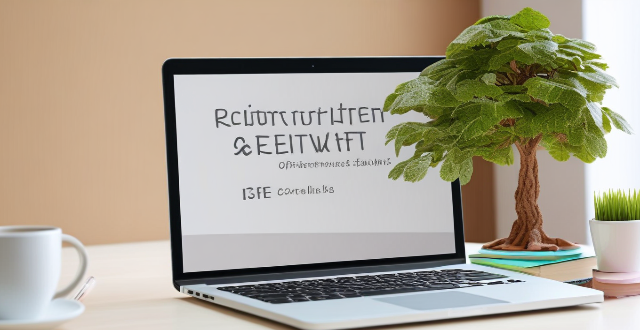
Can you recommend any effective study apps ?
The text provides a topic summary of effective study apps that can help students stay organized, focused, and motivated. The apps include Quizlet, Forest, Evernote, Khan Academy, and Duolingo. Quizlet is a flashcard app with various modes of studying including flashcards, practice tests, and games. Forest helps users stay focused by planting virtual trees while studying. Evernote is a note-taking app that allows users to organize their notes into notebooks and folders. Khan Academy is a free online learning platform that offers video lessons and exercises on a wide range of subjects. Duolingo is a language learning app that uses gamification techniques to keep users engaged and motivated. The text concludes by encouraging readers to try these apps and see which ones work best for them.

What are the best ways to take notes during a lecture or class ?
The given text provides a detailed guide on how to take effective notes during a lecture or class. It emphasizes the importance of active listening, organizing one's notebook, using shorthand and abbreviations, focusing on key ideas, utilizing visual aids, reviewing notes, collaborating with peers, and leveraging technology for note-taking. The strategies aim to enhance learning and retention by capturing essential information efficiently.
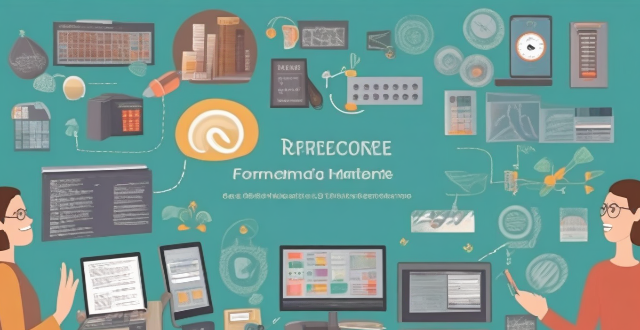
Is there a specific format or structure that works best for taking notes ?
Taking effective notes requires finding a format or structure that suits your learning style, subject matter, and personal preferences. Popular note-taking methods include the Cornell Method, the Outline Method, the Mind Map Method, and the Sentence Method. The Cornell Method encourages active learning by prompting you to think about the material as you take notes, while the Outline Method helps you see the big picture and understand how different concepts relate to each other. The Mind Map Method encourages creativity and helps you see connections between different ideas, while the Sentence Method encourages deep thinking and understanding of the material. It's important to experiment with different methods and find the one that works best for you in order to improve your retention, organization, and productivity.

How can I avoid information overload when taking notes ?
When taking notes, it's easy to become overwhelmed by the sheer volume of information. However, there are strategies you can employ to avoid information overload and ensure that your note-taking is effective and efficient. Here are some tips: 1. Prioritize Information: Determine what information is most important and relevant to your needs. Focus on key concepts, main ideas, and supporting details that are directly related to your goals or assignment requirements. This will help you filter out extraneous information and prevent you from feeling overwhelmed. 2. Use a Systematic Approach: Develop a consistent system for organizing your notes. This could involve using headings, subheadings, bullet points, or numbered lists to break down information into manageable chunks. By doing so, you'll be able to quickly identify and locate specific pieces of information later on. 3. Take Breaks and Review: Taking regular breaks while studying or attending lectures can help reduce cognitive fatigue and improve focus. During these breaks, review your notes briefly to reinforce key concepts and identify areas that may need further clarification or elaboration. 4. Summarize and Paraphrase: Instead of trying to capture every word verbatim, summarize or paraphrase key points in your own words. This not only helps with retention but also encourages active learning as you process the information more deeply. 5. Use Visual Aids: Incorporating diagrams, charts, or other visual aids into your notes can help simplify complex information and make it easier to understand and remember. These tools can also serve as helpful reminders when reviewing your notes later on. By implementing these strategies, you can effectively manage the amount of information you encounter during note-taking sessions and avoid feeling overwhelmed or stressed out. Remember, the goal is not to capture every detail but rather to distill key concepts and retain them for future reference.

Is group study beneficial for exam preparation ?
Group study offers benefits for exam preparation, including knowledge sharing, motivation, improved comprehension, social skills development, stress relief, and better time management. Its success depends on factors like group dynamics and commitment levels.

How can I make efficient notes for revision purposes ?
Efficient note-taking is crucial for revision and studying. Use the Cornell Method, highlight key information, use abbreviations and symbols, organize your notes, and review them regularly to improve retention and prepare for exams.

How do mind maps aid in studying and retaining information ?
Mind maps are a visual tool that aids in studying and retaining information by improving organization, enhancing creativity, promoting active learning, and facilitating recall. They provide a logical structure for organizing thoughts and connecting ideas, making complex information more accessible. Mind maps also encourage brainstorming and experimentation, leading to better learning outcomes. Additionally, they promote deeper learning through active participation and reflection on understanding. Finally, mind maps facilitate recall by providing visual cues and breaking down information into manageable chunks. Incorporating mind maps into your study routine can boost academic performance and achieve better results in your studies.
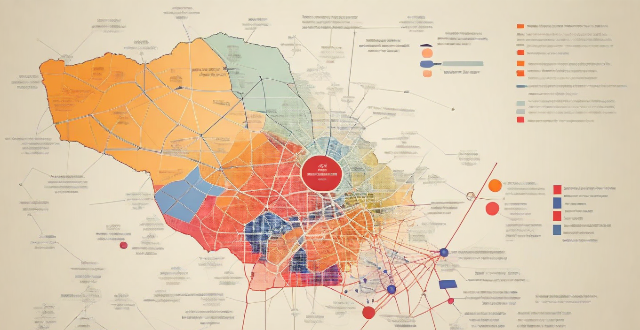
How can mind maps help in revising large amounts of information ?
Mind maps are a useful tool for organizing and revising large amounts of information. By visualizing complex information, identifying key themes and relationships, organizing thoughts, improving memory retention, and facilitating creative thinking, mind maps can help learners better understand and retain information. To use mind maps effectively, choose a central idea or theme, create branches for subtopics, add details and examples, connect related ideas, review and refine the map, and use it as a study tool.
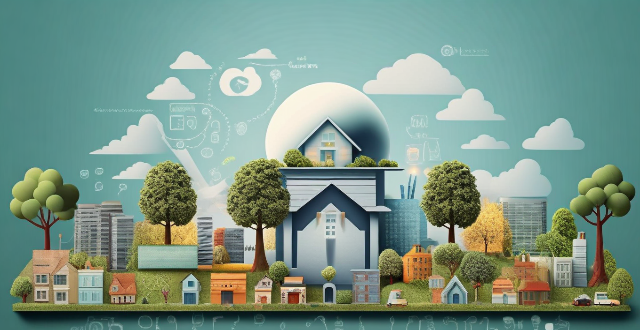
How often should I revisit and update my notes ?
Revisiting and updating your notes is a crucial learning process that helps reinforce information, identify areas needing attention, and keep notes relevant and organized. Immediately after class or meeting, review key points, fill in gaps, and organize the information. Within 24-48 hours, consolidate learning, connect ideas, and identify questions. Weekly reviews should summarize concepts, integrate with other subjects, and reflect on understanding. Monthly reviews aid long-term retention, update notes, and prepare for assessments. Before major assessments, do a comprehensive review, practice application, and create study aids. Ongoing maintenance includes cleanup, indexing/categorizing, and digital backup. The frequency of revisiting and updating notes depends on subject complexity, learning goals, and deadlines.

What are some effective study techniques for college students ?
**Effective Study Techniques for College Students:** College students can improve their academic performance by adopting effective study techniques. These include creating a study schedule, finding a suitable study environment, using active learning strategies, breaking information into chunks, practicing retrieval and review, staying organized, collaborating with peers, maintaining a healthy lifestyle, and seeking help when needed. Consistency, minimizing distractions, engaging with the material, chunking information, quizzing oneself, spaced repetition, utilizing note-taking systems and digital tools, participating in study groups, getting enough sleep and exercise, and leveraging academic support services are all crucial elements of successful studying. It's important to experiment and find out which methods work best for individual needs.

What are some helpful strategies for studying for exams ?
The article provides a comprehensive guide to effective exam preparation, emphasizing the importance of creating a structured study plan, finding an optimal study environment, using active learning techniques, practicing with past exam papers, taking regular breaks, staying organized, seeking help when needed, and maintaining a healthy lifestyle. These strategies aim to enhance focus, memory retention, and overall performance in exams.

What are the challenges faced by adult learners in the process of lifelong learning ?
The text discusses the challenges faced by adult learners in the process of lifelong learning, including time constraints, lack of motivation, access to resources, technology barriers, and cognitive abilities. It provides solutions to overcome these challenges such as prioritizing time, setting clear goals, exploring resource options, staying informed about technology trends, and adopting effective study strategies. The text emphasizes the importance of lifelong learning for personal and professional development and adapting to a rapidly changing world.

How can I improve my understanding of historical events and dates ?
To enhance your understanding of historical events and dates, start with introductory books for a broad overview before diving into subject-specific literature. Watch educational videos and documentaries for visual learning. Visiting museums and historical sites offers tangible connections to the past. Engaging with online courses and lectures provides expert insights. Participating in discussion groups and forums exposes you to different perspectives. Creating timelines and taking notes aid memory retention. Integrating various sources through cross-referencing and critical thinking fosters a well-rounded understanding of history.
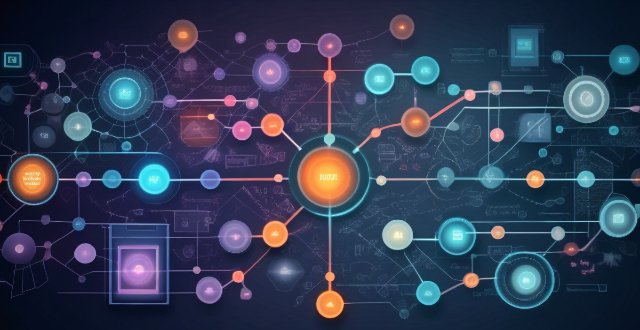
How do spaced repetition systems align with scientific memory principles ?
Spaced repetition systems (SRS) align with scientific memory principles in several ways, including active recall, the spacing effect, the testing effect, retrieval cue variability, elaborative interference, desirable difficulty, feedback, and individualized learning. These techniques help to enhance information retention and optimize the learning process.